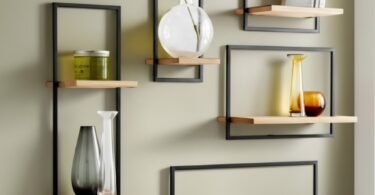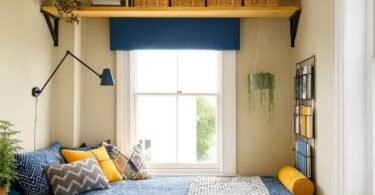The Magic of Eating Outside (And Why We’re All Obsessed)
You know that feeling when you sit down at an outdoor café and suddenly your mediocre sandwich tastes like it was prepared by a Michelin-star chef? I’ve been there too many times to count. There’s this weird thing that happens when you move your meal from inside to outside. The air feels different. The food tastes better. Even the coffee seems to wake you up more effectively.
I can’t quite put my finger on what makes outdoor dining so special. Maybe it’s the breeze that hits your face right when you take that first bite. Maybe it’s watching people walk by while you’re enjoying your meal. Or maybe, just maybe, it’s the simple fact that we spend so much time cooped up indoors that eating outside feels like a mini vacation.
My neighbor Greg swears it’s the sounds. He’ll sit on his deck for hours, insisting that the birds provide better dinner music than any playlist on Spotify. I’m not totally convinced, but I get where he’s coming from. There’s something about natural background noise that makes a meal feel more relaxed. Even city sounds can add character to your dining experience. The distant honking of cars, people chatting as they pass by, the rumble of a train in the distance. It all becomes part of the experience.
But here’s the thing that really sold me on outdoor dining. It’s the freedom. When you’re eating outside, there are no walls closing you in. You’re not staring at the same four corners you see every single day. You can look up and see the sky. You can feel the temperature change as the sun sets. You’re part of something bigger than your living room.
I remember the first time I ate dinner at a restaurant with really good outdoor seating. It was nothing fancy, just a local spot with some tables on the sidewalk. But they had these incredibly comfortable chairs. Not the wobbly metal kind that make your back hurt after fifteen minutes. These were solid, supportive, and somehow both stylish and functional. I sat there for two hours after finishing my meal, just talking with friends and enjoying the evening. That’s when it hit me. I wanted this feeling at home.
The question started nagging at me. Could I recreate this experience in my own backyard? I live in a pretty average suburban area. No scenic lake views. No mountain vistas. Just a regular backyard with some grass and a concrete patio that came with the house. But that restaurant didn’t have anything special either. Just good furniture and a bit of thought put into the space.
So I started researching. Turns out, location matters way less than you’d think. Sure, it’s nice to have a beautiful view, but you can create an amazing outdoor dining space pretty much anywhere. I’ve seen incredible setups on tiny apartment balconies in crowded cities. I’ve watched friends transform basic suburban patios into spaces that rival high-end restaurants. The secret isn’t where you live. It’s about choosing the right furniture and putting some thought into how you arrange everything.
The process can feel overwhelming at first. Walk into any furniture store or scroll through any home improvement website, and you’ll see thousands of options. Chairs in every material you can imagine. Tables in sizes ranging from “cozy dinner for two” to “I’m hosting Thanksgiving for thirty people.” Price tags that make your eyes water and budget options that make you wonder if they’ll survive a single season.
But I learned something along the way. You don’t need to spend a fortune to get that restaurant feeling at home. You just need to be smart about what you buy. You need to think about how you’ll actually use the space. And you need to avoid some common mistakes that’ll leave you with furniture that looks great in the store but terrible on your patio.
I’m going to share everything I learned during my journey to create the perfect outdoor dining space. We’ll talk about what works, what doesn’t, and how to make decisions that you won’t regret a year down the line. I made plenty of mistakes along the way, so you don’t have to. Let’s figure out how to bring that outdoor restaurant magic to your home.

Should You Buy a Complete Set or Mix and Match?
This was my first big decision, and I almost messed it up completely. I was standing in a furniture store, staring at a beautiful dining set. Six matching chairs, one table, all designed to look perfect together. The salesperson was hovering nearby, ready to ring me up. But then I remembered the two chairs I already had sitting on my patio. They were still in decent shape. Couldn’t I just buy a table and a few more chairs to match?
Spoiler alert. That’s not how it works. Or at least, that’s not how it works if you want your patio to look intentional instead of like you furnished it from random garage sales.
Let me tell you about my friend Sarah. She’s great at a lot of things, but furniture coordination is not one of her strengths. She spent two years slowly adding pieces to her outdoor space. First, she bought a table. Six months later, she found chairs on sale. Then she added a bench because it seemed practical. By the time she was done, her patio looked like a furniture store exploded. Nothing matched. The styles clashed. The colors were all over the place. She eventually gave up and donated everything, starting from scratch with a complete set.
I learned from her mistake. When you buy a complete outdoor furniture set, you’re getting pieces that were designed to work together. The chairs are the right height for the table. The materials match. The style is consistent. You don’t have to worry about whether the new chairs will look weird next to your existing table. Everything just works.
This is particularly true if you’re starting fresh. Maybe you just moved into a new place. Maybe you’re finally getting around to furnishing that patio you’ve been ignoring for years. Maybe your old furniture finally gave up after one too many winters. Whatever the reason, if you’re building an outdoor dining area from nothing, buying a set makes your life so much easier.
The convenience factor alone is worth it. You walk into a store or visit a website, you see a set you like, you buy it, and you’re done. No agonizing over whether this chair will complement that table. No measuring to make sure heights are compatible. No mental gymnastics trying to visualize how different pieces will look together. One purchase, one delivery, one setup session, and your patio is ready to go.
But let’s talk about the elephant on the patio. What if you already have outdoor furniture that’s still in good condition? What if you inherited some pieces from your parents and you’re not ready to get rid of them? What if you genuinely love that vintage table you found at a flea market and you want to keep it?
Here’s where things get more complicated, but not impossible. If you’re set on keeping some existing pieces, you need to be really thoughtful about what you add. Don’t just buy whatever’s on sale and hope it works. Take measurements. Take photos. Bring paint chips if you need to match colors. Some stores will even let you return furniture if it doesn’t work out, but that’s a hassle nobody wants.
I tried the mix-and-match approach once. I had this wooden bench that my grandfather made, and I couldn’t bear to part with it. So I spent weeks looking for chairs and a table that would complement it. I learned that matching wood tones is harder than it looks. I learned that mixing materials can work, but only if you know what you’re doing. I learned that sometimes love for a single piece isn’t worth the headache of building around it.
The bench is now in my garden, and my patio has a matching set. I still see the bench every day, but my dining area looks cohesive and intentional. Sometimes the best solution is finding a new purpose for old favorites rather than forcing them to work in a space where they don’t belong.
Here’s my actual advice after going through this process. If you’re furnishing a new outdoor dining space or replacing everything at once, buy a set. You’ll save time, stress, and probably money in the long run. If you’re determined to keep existing pieces, be prepared to put in serious effort to find complementary items. And if you find yourself struggling to make old furniture work with new purchases, consider whether you’re making decisions based on logic or sentiment. Sometimes we hold onto things for the wrong reasons.
One more thing to think about. Sets usually come in standard configurations. A table with four chairs, or six chairs, or eight chairs. Make sure the set you’re considering actually fits your needs. If you regularly host large gatherings, a four-chair set will leave you scrambling for extra seating. If you live alone or rarely entertain, an eight-chair set is overkill. Think about how you actually use your space, not how you imagine using it in some perfect future scenario.

Measuring Your Space (Because Eyeballing It Never Works)
I’m going to share something embarrassing. The first outdoor dining set I bought didn’t fit on my patio. Not in a “it’s a little tight” way. In a “the table literally won’t fit through the gate and the chairs crowd every inch of available space” way. I had to return everything and start over. The worst part? I could have avoided this disaster with fifteen minutes and a tape measure.
Measuring seems obvious, right? But you’d be shocked how many people skip this step. We get excited about furniture we see online or in a store, and we convince ourselves it’ll work. Our eyes lie to us. That patio looks bigger when it’s empty. That table looks smaller in the massive showroom. Measurements don’t lie.
Grab a tape measure and get the exact dimensions of your outdoor space. Not approximate. Exact. Measure the length and width of your patio or deck. Measure any obstacles like pillars, built-in planters, or grill stations that take up floor space. Measure the width of gates or doors if you’ll need to carry furniture through them. Write all of this down. Take photos. Do whatever helps you remember the actual size of your space.
Now comes the fun part. You need to visualize how furniture will actually fit in that space. This isn’t just about whether the physical pieces can squeeze into the area. It’s about whether you’ll have room to move around, pull out chairs, walk past the table without turning sideways, and generally use the space like a normal human being.
I learned about clearance the hard way. Clearance is the empty space around furniture that allows you to use it comfortably. You need space to pull chairs out from the table. You need space to walk behind people who are sitting. You need space to set down serving dishes or move around while entertaining. Professional designers recommend at least three feet of clearance around a dining table. That’s three feet of empty space on all sides.
Let me paint a picture. You have a patio that’s twelve feet by twelve feet. Sounds pretty big, right? Now place an outdoor dining table that’s six feet long and three feet wide in the middle. Add chairs around it. Suddenly you’re left with very little room to maneuver. Pull out a chair to sit down, and you’re bumping into the patio railing. Try to walk around the table while people are seated, and you’re doing an awkward sideways shuffle. This is not the relaxing outdoor dining experience you were imagining.
The solution is buying furniture that fits the space, not furniture you wish would fit. If you have a small patio, you need a small dining set. If you have a huge deck, you can go bigger. This sounds painfully obvious, but I’ve watched countless friends make this mistake. They buy furniture for the outdoor space they want, not the outdoor space they have.
Size matters for another reason too. How many people do you realistically need to seat? I see people buying massive eight-person dining sets when they live alone and rarely have guests. Or couples buying tiny four-person sets who then complain they can’t host family dinners. Think about your actual lifestyle, not an imaginary future version of yourself.
I live alone but I love hosting dinners. I knew I needed a six-person table minimum. But I also knew my patio wasn’t huge. So I measured everything carefully and found a table that seats six without overwhelming the space. It fits perfectly, leaves room for movement, and accommodates my regular dinner parties. That’s what happens when you measure properly and think about real needs.
Here’s a trick that helped me. Before buying anything, mark out the dimensions of furniture on your patio using tape or chalk. Create outlines showing exactly where a table and chairs would sit. Then try to move around in that space. Sit in an imaginary chair and see if you can pull it out comfortably. Walk around the outline and see if you’re constantly bumping into things. This physical test reveals problems that numbers on paper might not.
You can also use furniture you already own to test sizes. Don’t have outdoor furniture yet? Use indoor dining chairs as stand-ins. Place them where outdoor chairs would go. Sit in them. Move around them. See how the space feels. This costs nothing and provides valuable information before you commit to a purchase.
Think about different activities too. Will you just be eating at this table, or do you plan to use it for other things? I use my outdoor dining table for everything from morning coffee to working on my laptop to hosting game nights. That meant I needed a slightly larger surface than a pure dining table would require. If you plan to use your space for multiple purposes, factor that into your size decisions.
The shape of your table matters too. Round tables take up less visual space and make conversation easier, but they’re not great for tight areas. Rectangular tables fit better against walls or in narrow spaces. Square tables work well for small patios. Think about your space configuration and what shape makes the most sense.
Don’t forget about vertical space. If you have a low pergola or awning, tall chair backs might not fit. If you’re on a balcony with railings, make sure chairs won’t block the view when people are seated. These vertical considerations often get overlooked until furniture arrives and suddenly you realize you created new problems.

Function vs. Style (And Why You Need Both)
This is where things get personal. Some people choose furniture purely based on looks. They want their patio to look like it belongs in a magazine spread. Other people focus entirely on comfort and practicality. They want furniture that’ll last and feel good, even if it’s not winning any design awards. I’m here to tell you that you’re allowed to want both.
Let’s start with the practical side. Functional outdoor furniture means chairs that support your back properly. It means a table that’s the right height for eating comfortably. It means surfaces that are easy to clean after inevitable spills. It means materials that can handle weather without falling apart. This is the foundation. If your furniture isn’t functional, you won’t use it, no matter how great it looks.
I bought cheap outdoor chairs once. The price was incredible. The reviews were decent. They looked fine in photos. But sitting in them felt like punishment. The seats were too hard. The backs were too straight. After thirty minutes, my spine was screaming at me. Those chairs sat unused for a year before I finally admitted defeat and replaced them. Cheap is not the same as affordable, and sometimes you really do get what you pay for.
Good chairs make or break an outdoor dining space. You want seats that have some give to them. You want backs that support your lower spine. You want armrests if you plan to sit for extended periods. You want cushions that stay in place and don’t slide around every time you shift position. These details matter way more than you think.
Tables need to be stable. I’m talking about no wobbling, no tipping, no feeling like your dinner plate might slide off at any moment. Test tables before buying them if possible. Put weight on one corner and see if the other side lifts up. Push down on the surface and check for flex. A wobbly table ruins every meal served on it.
Cleaning matters too. Outdoor furniture gets dirty. Rain leaves water spots. Pollen coats everything in a yellow film. Birds make contributions you’d rather not think about. Food and drinks spill constantly. If your furniture is a nightmare to clean, you’ll stop bothering, and your beautiful outdoor dining area will start looking rough pretty quickly.
I love my current table partly because cleaning it takes about thirty seconds. A quick wipe with a damp cloth and it looks brand new. My previous table had all these grooves and decorative details that trapped dirt. Cleaning it was a whole production involving brushes and special cleaners. I hated it. Keep maintenance in mind when choosing furniture.
Now let’s talk about the fun part. Style. Aesthetics. Making your outdoor space look amazing. This matters too, and anyone who says otherwise is lying. We’re visual creatures. We want our homes to look good. There’s nothing wrong with caring about how your patio furniture looks.
Your outdoor dining furniture should complement your home’s overall style. If you have a modern house with clean lines, traditional ornate furniture will look out of place. If you have a cozy cottage aesthetic going on, sleek minimalist furniture might feel too cold. Look at your home’s exterior, your interior style, and any existing outdoor elements. Your furniture should feel like it belongs.
Color plays a bigger role than you might expect. Neutral colors like black, white, gray, and brown are safe choices that work with almost anything. Bold colors make statements but can be harder to work with long term. I went with a warm gray for my furniture. It looks sophisticated, hides dirt better than white, and won’t clash if I decide to change my outdoor décor down the line.
Think about the view from inside your home too. Can you see your patio through windows or glass doors? Your outdoor furniture is part of the view. It should enhance what you see from inside, not create an eyesore that makes you want to close the blinds.
Here’s where I’ll get a bit philosophical. You need to figure out what matters more to you right now. Would you rather look at your outdoor dining set and feel proud of how beautiful it is? Or would you rather sit in it and feel grateful for how comfortable it is? Both are valid. Both matter. But if you’re on a budget and can’t have perfection in both categories, you need to know which one wins.
I prioritized comfort and function. My furniture isn’t the most stylish option out there. It’s not making any design statements. But sitting in these chairs for three hours during a dinner party feels amazing. The table is rock solid and easy to maintain. I use this space constantly because it’s practical and comfortable. For me, that was the right choice.
My sister went the opposite direction. She chose furniture that looks absolutely stunning. Her patio could be in a home design magazine. But the chairs aren’t particularly comfortable for long periods. The table requires more maintenance than she expected. She uses her outdoor space less than I use mine, partly because the furniture isn’t as inviting for extended use.
Neither of us made the wrong choice. We just had different priorities. You need to be honest with yourself about what you value most. If impressing guests and creating a beautiful outdoor space brings you joy, lean into aesthetics. If you want a space where you’ll spend hours reading, working, or entertaining, prioritize function.
The best scenario is finding furniture that does both. It exists. You might have to spend more money. You might have to shop around longer. But there are outdoor dining sets that look great and feel comfortable and hold up well. Don’t settle for furniture that only checks one box if you can find options that check multiple boxes.
One last thought on this. Your needs might change over time. The furniture you buy in your twenties might not work in your forties. Your priorities shift as your life changes. That’s okay. Don’t stress about finding the perfect forever solution. Find what works for you right now, use it well, and replace it when your needs change. Furniture isn’t a lifetime commitment.

Materials Matter More Than You Think
Walk into any outdoor furniture store and you’ll see wood, metal, plastic, wicker, rattan, resin, and materials you didn’t even know existed. Each one has pros and cons. Each one requires different levels of maintenance. Each one holds up differently over time. Choosing the right material is just as important as choosing the right style or size.
Let’s start with wood because that’s what most people think of first. Wood outdoor furniture looks classic. It feels natural. It can be beautiful. But wood also requires serious maintenance. We’re talking regular sealing or staining. Protection from moisture. Careful storage during harsh weather. Wood rots if you don’t take care of it properly.
I had wooden outdoor furniture once. It was gorgeous. Rich color, solid construction, beautiful grain patterns. For the first year, I was diligent about maintenance. I sealed it every season. I covered it during rain. I cleaned it regularly. But life gets busy. I skipped a sealing session. Then another. Within three years, that beautiful wood furniture was showing serious wear. The finish was peeling. The wood was splitting. Some pieces had soft spots where moisture had gotten in.
Was the wood furniture bad? No. Was I a bad furniture owner? Maybe. The point is that wood demands commitment. If you love the look of wood and you’re willing to put in the work, go for it. If you want something more forgiving, keep looking.
Teak is the exception in the wood category. Teak naturally resists moisture and insects. It ages into a beautiful silvery gray if you don’t treat it. Teak furniture can last decades with minimal maintenance. The catch? Teak is expensive. Really expensive. You’ll pay a premium for that durability.
Metal furniture comes in different varieties. Wrought iron is heavy and sturdy. It won’t blow away in wind. But iron rusts if you don’t maintain it. You need to watch for rust spots and treat them quickly before they spread. Cast aluminum is lighter and doesn’t rust, but it can corrode over time. Stainless steel is durable and modern-looking, but it shows fingerprints and water spots easily.
I considered metal furniture but decided against it for one simple reason. I live in a humid climate. Metal and moisture don’t play well together long term. Even with protective coatings, I knew I’d be fighting rust and corrosion. That didn’t appeal to me.
Wicker has a romantic, classic look. When most people say wicker, they’re actually talking about either natural or synthetic materials woven into that classic wicker pattern. Natural wicker is beautiful but terrible for outdoor use. It breaks down in weather. Synthetic wicker, usually made from resin, holds up much better. It mimics the look of natural wicker without the rapid deterioration.
This brings us to resin. Resin outdoor furniture has become incredibly popular over the past decade, and for good reason. Resin is a type of plastic polymer that’s designed to mimic other materials while being more durable and weather-resistant. Modern resin furniture can look like wood, wicker, or even stone.
The benefits of resin are hard to ignore. It doesn’t rot like wood. It doesn’t rust like metal. It doesn’t break down in sunlight as quickly as cheaper plastics. It’s lightweight, which makes rearranging furniture easy. It requires almost no maintenance. A quick wipe-down is usually all it needs. For busy people who want nice outdoor spaces without constant upkeep, resin is a game changer.
I ended up choosing resin wicker furniture for my patio. It has the classic woven look I love without the maintenance headaches of natural materials. I’ve had it for three years now. It’s been through scorching summers, freezing winters, heavy rain, and brutal sun. It still looks almost new. I spend maybe five minutes a month cleaning it. That’s the kind of low-maintenance solution that works for my life.
Resin isn’t perfect. Some cheaper resin furniture can fade in direct sunlight over time. Lower-quality resin can become brittle and crack after years of weather exposure. The key is buying good resin furniture, not cheap resin furniture. There’s a difference, and that difference shows up in how long your furniture lasts.
The environmental angle matters to some people. Resin is a plastic product, which means it comes from petroleum. If environmental impact is a big concern for you, this might influence your decision. Some resin furniture is made from recycled materials, which is slightly better. Wood from sustainably managed forests is another eco-friendly option if you’re willing to do the maintenance.
Here’s my take after years of dealing with different outdoor furniture materials. Choose based on three factors. Your climate, your maintenance tolerance, and your budget. If you live somewhere with mild weather and you love caring for furniture, wood might be perfect. If you live in a harsh climate and you want something that’ll survive without babying, resin makes sense. If money is no object and you want maximum durability with a classic look, teak is hard to beat.
Don’t let anyone tell you there’s one right answer. The right material is the one that fits your specific situation. My resin furniture is perfect for me. It might be wrong for someone who lives in a different climate or has different priorities. That’s fine. The furniture industry gives us options for a reason.
One practical tip. If you’re buying furniture that’ll be exposed to the elements year-round, choose materials that can handle it. If you have covered patio space or you’re willing to store furniture during extreme weather, you have more flexibility. Knowing how exposed your furniture will be should influence your material choice.
Making the Final Decision
So you’ve thought about sets versus individual pieces. You’ve measured your space carefully. You’ve weighed function against style. You’ve considered different materials. Now you’re standing at the finish line, ready to actually buy outdoor dining furniture. This is where decision paralysis often kicks in. Let me help you push through it.
First, set a realistic budget. Outdoor furniture ranges from dirt cheap to mortgage payment expensive. You need to know what you can actually afford before you start shopping. Be honest with yourself. If you can’t afford the teak dining set of your dreams, don’t torture yourself by shopping for it. Find the best option within your actual budget.
I learned this lesson the expensive way. I fell in love with a dining set that cost three times what I planned to spend. I bought it anyway, justifying the expense by telling myself it would last forever. The guilt over that purchase haunted me for months. The furniture was great, but the financial stress wasn’t worth it. When I eventually replaced it (long story involving a tree branch and a windstorm), I stayed within budget and felt so much better about the purchase.
Quality matters, but quality doesn’t always mean expensive. Some mid-range outdoor furniture is built better than high-end options. Read reviews carefully. Look for comments about durability, comfort, and how furniture holds up over time. Pay attention to negative reviews. One-star reviews tell you more about potential problems than five-star reviews tell you about benefits.
Check warranties and return policies before buying. Good outdoor furniture should come with some kind of warranty. If a company won’t stand behind their product, that’s a red flag. Return policies matter too, especially if you’re buying online. You want the option to send furniture back if it doesn’t work out.
Think about delivery and assembly. Some outdoor furniture arrives fully assembled. Some requires hours of putting pieces together. Some is so heavy you’ll need help getting it into place. Make sure you understand what you’re signing up for. If you hate assembling furniture, paying extra for pre-assembled options might be worth it.
Timing matters for furniture shopping. Outdoor furniture goes on sale at the end of summer when stores want to clear inventory. You can save serious money by shopping in August or September instead of April or May. The selection might be picked over, but the prices are better. If you can wait, waiting pays off.
Visit stores in person if possible. Photos lie. Furniture that looks comfortable online might feel terrible in person. Colors on screens don’t always match real life. Dimensions that seem perfect on paper might feel wrong when you see the actual furniture. If you can see and touch furniture before buying, do it. That hands-on experience prevents expensive mistakes.
When you visit stores, actually sit in the chairs. Spend a few minutes in each one. Lean back. Shift around. See how it feels. Don’t be embarrassed about thoroughly testing furniture. This is a purchase you’ll live with for years. You need to know what you’re getting.
Ask about maintenance requirements. Don’t just assume furniture will take care of itself. Find out what’s recommended for cleaning, what kind of weather protection you might need, and how often you should do upkeep tasks. If the maintenance sounds like too much work, keep looking.
Consider buying in phases if budget is tight. You don’t have to furnish your entire outdoor space at once. Start with a dining table and chairs. Add side tables or benches later. Build your outdoor space over time instead of blowing your entire budget at once. This approach also lets you learn what you actually need before committing to additional pieces.
Trust your gut at the end of the day. You’ll read all the reviews and compare all the options and measure everything twice. But sometimes you just know when furniture is right. If something feels perfect, that’s worth paying attention to. If something feels off, keep looking even if it checks all the logical boxes.
The goal here is creating an outdoor dining space you’ll actually use. Furniture that sits unused because it’s uncomfortable or difficult to maintain is wasted money. Furniture that brings you joy and gets used constantly is an investment in your quality of life. Keep that in mind when making decisions.
Don’t let perfection become the enemy of good enough. You’re not going to find furniture that’s perfect in every way. Something will always be a compromise. That’s okay. Find furniture that’s good enough to make you happy and move on. You can always upgrade later if needed.
Once you buy furniture, give it a real chance. Use it for a few weeks before deciding whether you made the right choice. Sometimes furniture takes time to break in. Sometimes you need to adjust to new pieces. Don’t immediately panic if your first impression isn’t glowing.
Finally, take care of whatever you buy. Even low-maintenance furniture benefits from basic care. Clean it regularly. Cover it during harsh weather if possible. Address small problems before they become big problems. Good furniture can last many years if you treat it right.
Your outdoor dining space should bring you happiness. It should be a place where you want to spend time. If your furniture helps create that space, you made a good choice. If it doesn’t, learn from the experience and make different choices next time. We all make furniture mistakes. The key is not letting those mistakes stop you from trying again.
Go create that outdoor dining area you’ve been dreaming about. Measure carefully. Choose wisely. Don’t overthink it. And then go sit outside and enjoy a meal in the fresh air. That’s what this is all about.








Leave a Comment